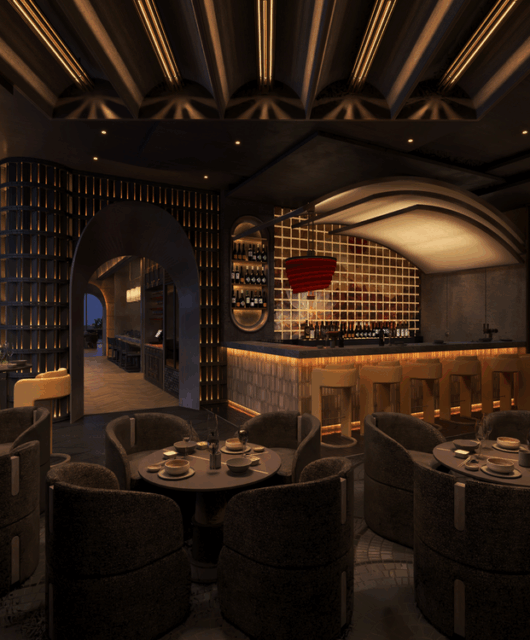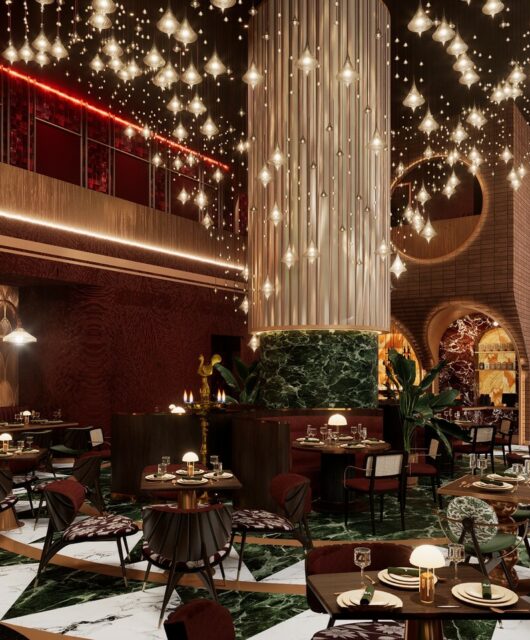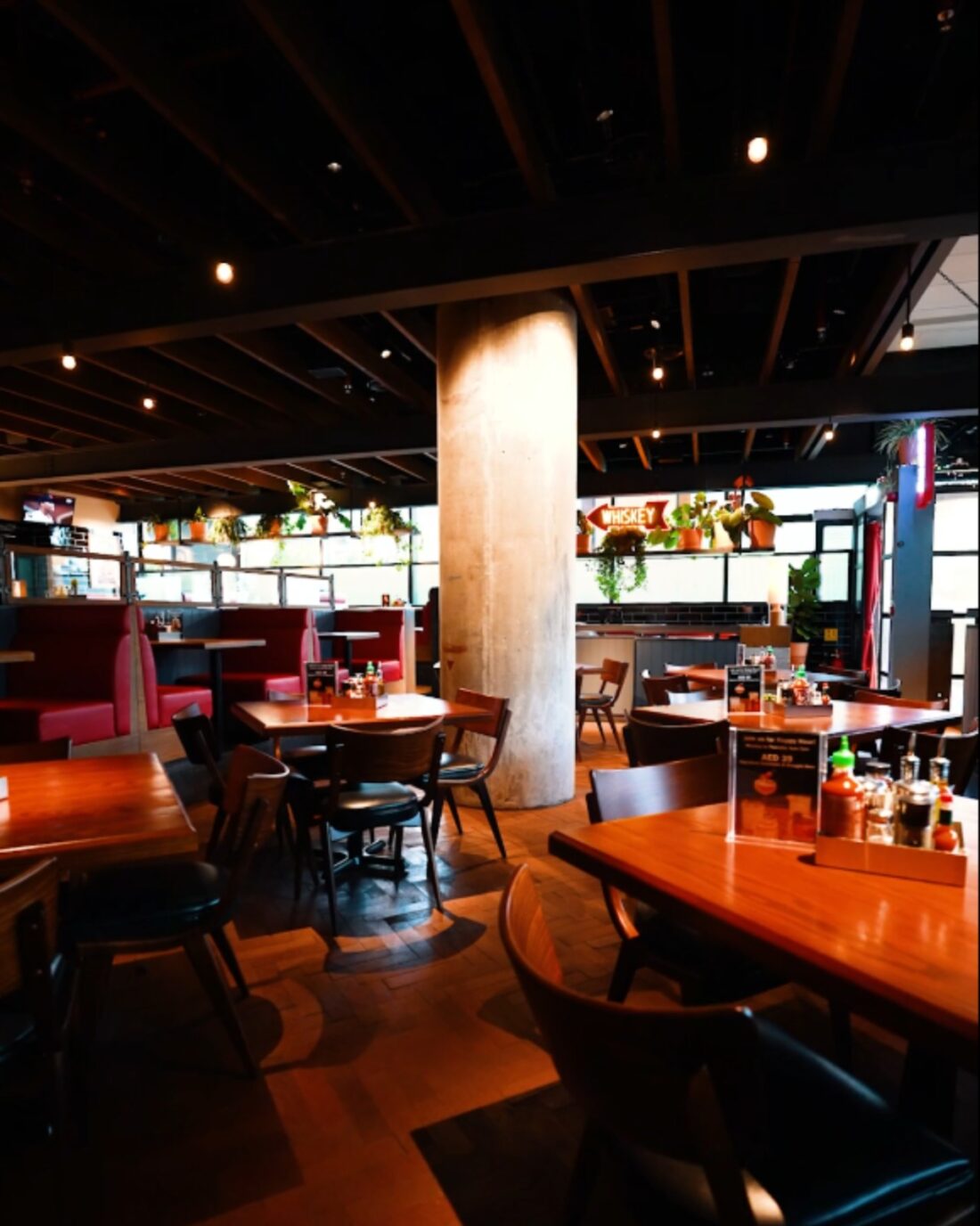
Exploring how TwentyOne06 imbued Pitfire Pizza’s established brand identity into the design of their Dubai Hills location
From storytelling to material selection, learn how TwentyOne06 translates the already-existing brand identity with design storytelling at Pitfire Pizza into a new location, enhanced premium look and feel as well as a new bar offering.
In the realm of interior design for F&B spaces, translating a cohesive brand identity is vital to a restaurant’s success. Each element within a space serves as a vessel for storytelling, communicating the values, ethos, and unique selling points of the space. At TwentyOne06, we understand the intricacies of this process, leveraging design as a tool to tell Pitfire’s story, that diners in Dubai can connect with. Here’s how we used Pitfire Pizza’s brand identity through design, using our recent design project, Pitfire Pizza, as a compelling case study.
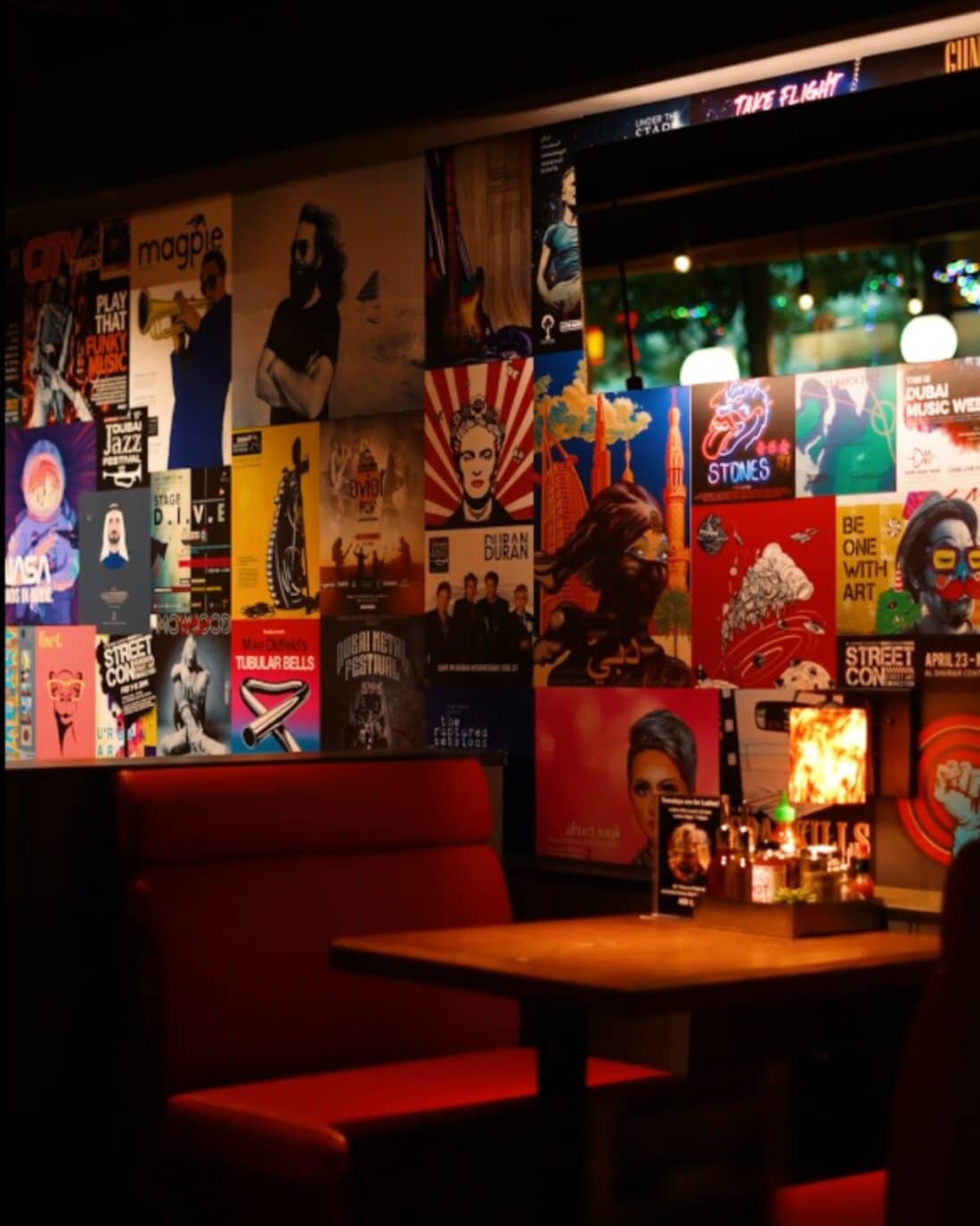
1. Telling the Brand Story:
Before diving into design decisions, it’s crucial to understand the core of a brand’s identity. This narrative served as a guiding principle, informing every aspect of the design process. For Pitfire Pizza, we embraced the brand’s rebellious spirit and culinary heritage, designing an underlying story that celebrates creativity, authenticity, and community, that the brand prides itself on. The brand story we wanted to tell with this project, centered around the hero aspect – dough/pizza makers providing a space for ‘the inner circle’ – a bandwagon of rebellious archetypes to express themselves.
2. Embracing the Brand’s Anarchitectural Elements:
An important part of translating Pitfire’s brand identity was the incorporation of anarchitectural elements that embody the brand’s ethos. Raw textures, industrial-inspired fixtures, and rustic design elements were used as visual markers of rebellion and creativity. By embracing these elements, the diners at the Dubai pizzeria were called to immerse themselves in the brand’s story and philosophy, providing a gateway for regulars to connect and engage with the brand on a deeper level.

3. Hero-ing the Brand’s Artistic and Counter-Culture Roots:
Incorporating elements that celebrate the brand’s counter-cultural roots is key to developing a sense of community. Pitfire Pizza is known to collaborate with local artists to adorn their pizza boxes. Similarly, we ‘hero-ed’ artwork as a focal point at the venue to showcase the brand’s involvement in Dubai’s art community as well as their love for rock and roll by incorporating murals of the famous band ‘The Grateful Dead’. The walls at Pitfire Pizza are filled with artwork posters and signage that celebrate their love of art, designing a space that serves as a platform for cultural exchange and expression. By celebrating artistic diversity, we reinforce the brand’s commitment to inclusivity and creativity.
4. An Authentic Brand-Influenced Design Concept:
Authenticity is central to designing a space that reflects a brand’s identity, particularly in F&B spaces. Every design detail at Pitfire, from handpicking the fabric on the furniture to curated material palettes for the walls, floors and bar, reflects the brand’s dedication to pizza and dough making. At Pitfire Pizza, we selected materials that evoke a similar reaction by combining warm, yet rustic elements to keep the brand’s persona alive, similar to how Pitfire utilizes ingredients to create their signature dough. This aspect of their branding was showcased in the materiality of the space, the pizza cutter wall installation, signage and the central bar feature.
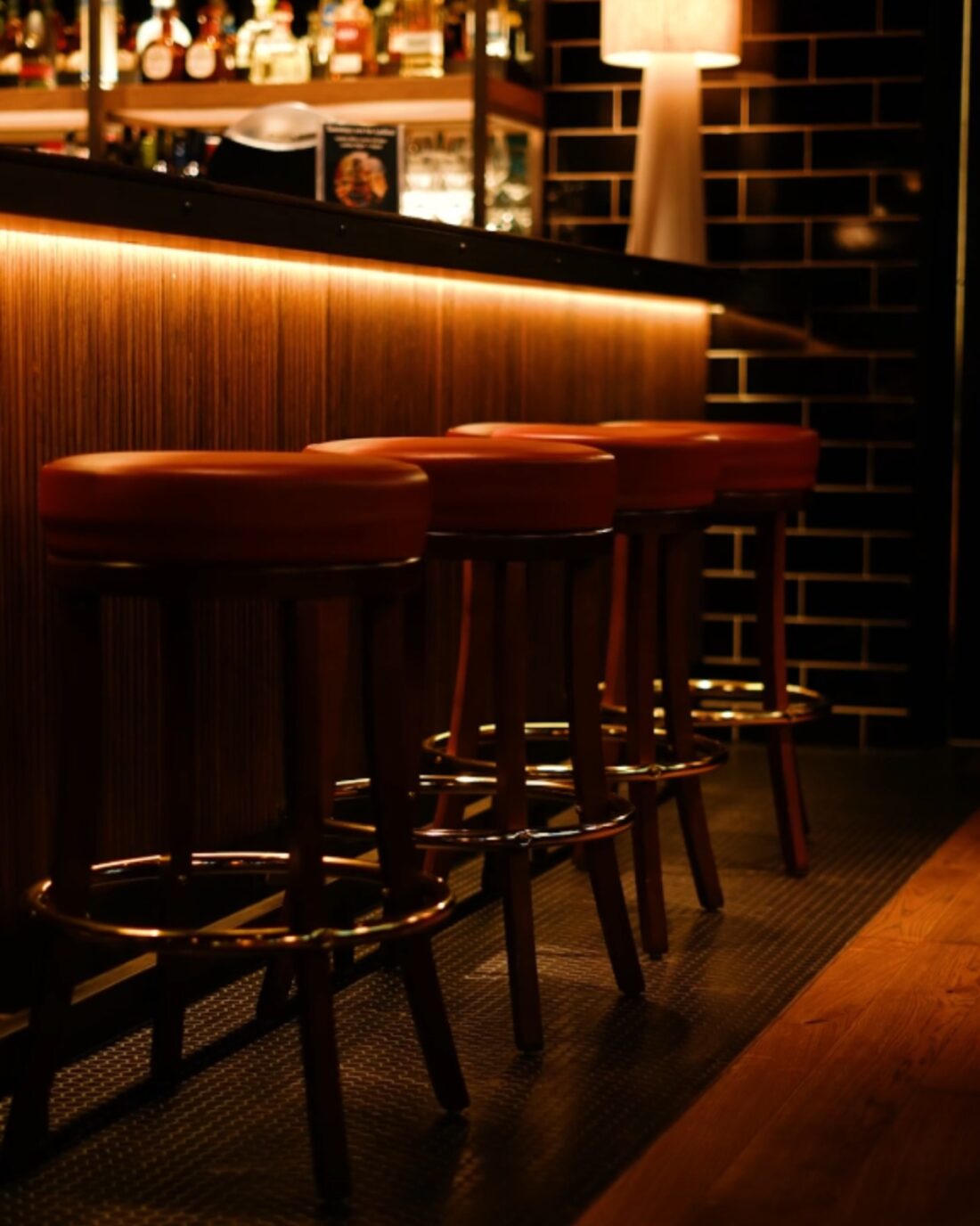
5. Communicating Brand Values Through Design:
Ultimately, the goal of brand identity through design is to effectively communicate the brand’s values, ethos, and unique selling points to uplift the guest experience. At Pitfire, we showcased their brand values of being a rebel, a non-conformist and highlighting their ‘work hard, play-hard’ culture with the color palette, layout and textures used. The bright and rebellious ‘Pitfire’ red seats paired with the rustic wooden dining and booth table, along with the layered details on the bar were designed to be an impactful centerpiece.
In conclusion, showcasing an existing brand identity through design requires a nuanced understanding of the brand’s narrative and values, coupled with thoughtful design thinking that resonates with their desired target audience.

